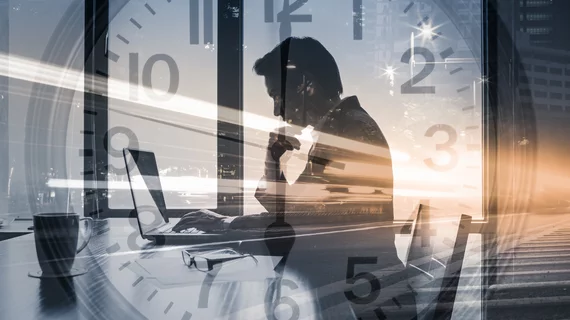New MRI guidelines help decrease call burden on off-hours neuroradiologists by 74%
New MRI guidelines have helped decrease the call burden on neuroradiologists by 74%, according to an analysis published in JACR [1].
The use of magnetic resonance imaging has grown among the pediatric population in recent years, driven by faster protocols and a desire to avoid unnecessary radiation exposure from CT. However, these patients can face resource barriers—especially during off hours, when staff and scanners may be unavailable—creating different standards of care within the same institution.
Children’s Hospital of Philadelphia sought to address this challenge, developing guidelines to dictate triage for patients requiring MR imaging during limited-resource hours. The intervention appears to be working, with the number of requests to the on-call neurorad dropping precipitously, alongside minimal additional burden for the triage radiologist.
“[The] triage process did not significantly change the number of neuro MR exams performed overnight, indicating that triage maintained the existing service expectations and did not increase the burden of exams read by the on-call neuroradiologist,” lead author Julian Lopez-Rippe, MD, with CHOP’s Department of Radiology, and co-authors wrote in the take-home-points section of the study. “Local development of appropriate use guidelines for neuroradiology MR exams overnight represents stewardship of imaging resources, a process that decreases low-yield and untimely imaging requests.”
Children’s Hospital of Philadelphia’s overnight radiology service is staffed by in-house, board-certified pediatric rads with generalist training. They read all diagnostic exams, except neurological MRIs, which are handled overnight by a board-certified pediatric neurorad who takes calls from home, sometimes working with a fellow-in-training. CHOP’s previous workflow for these cases involved six steps, with three phone calls to the on-call fellow or attending staffer. Exams were previously approved on a case-by-case basis according to the judgment of these two physicians, the study authors noted.
To build a better process, CHOP conducted interviews, surveys and group discussions to reach consensus on the appropriate use of overnight MRI for neurological concerns. The work came in three phases, including interviewing eight neuroradiologists, tabulating their responses to create a survey, and having a panel of experts across disciplines review the results.
Experts ranked the need for an MRI on a scale from “divert” to CT acceptable, with MR not required; “defer” until morning acceptable; or “do” immediately. With the new guidelines, the on-call neuroradiologist was called only when an exam triaged as “do” was ready for quality assurance. Meanwhile, the neuroradiologist did not receive a phone call for exams labeled as “defer” or “divert.”
Neuroradiologists ended up agreeing with the triage decision 89% of the time, which is comparable to other measures of interrater agreement in diagnostic imaging, the study authors noted. Triage by generalists did not change the number of neuro MR exams performed, the authors emphasized, “suggesting it’s a comparable alternative to specialist discussion.”
“As radiology strives to lessen staff call burden, generalist triage can sustain clinical service levels and reduce at-home call burnout,” Lopez-Rippe et al. advised.
Read much more about the study’s results, including potential limitations, in the Journal of the American College of Radiology at the link below.

